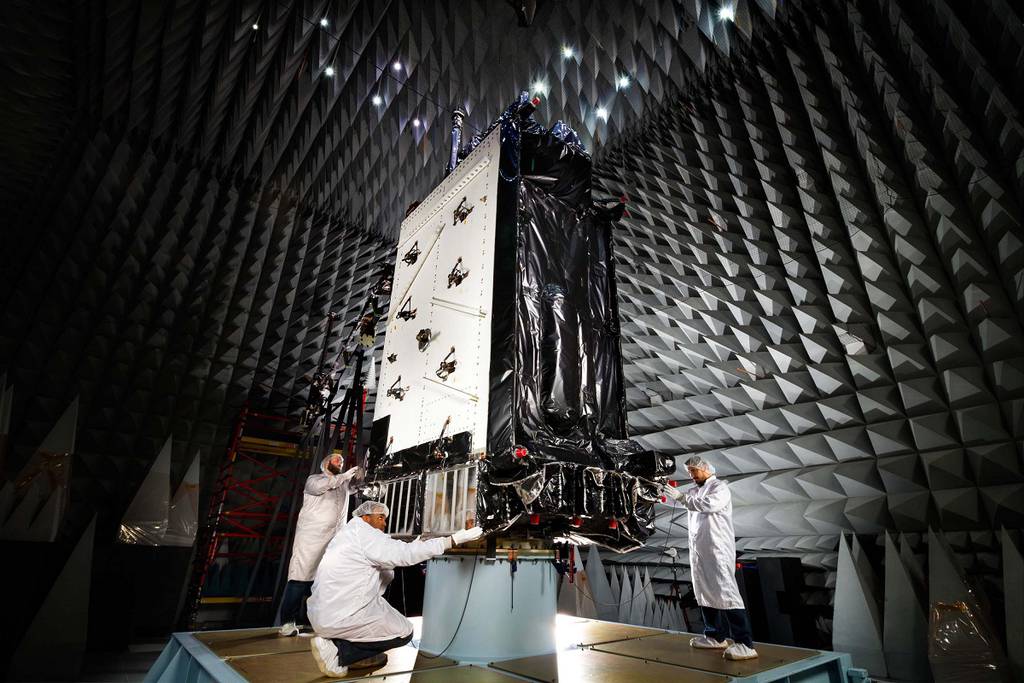An experimental satellite in geostationary orbit will serve as a test bed for future GPS technology and could also augment the current GPS constellation by providing advanced position, navigation and timing data to the war fighter.
The GPS constellation, made up of dozens of satellites in medium earth orbit, is the U.S. military’s primary source of PNT data. But war fighters aren’t the only users of GPS. The satellite system helps fuel the modern economy, creating billions of dollars in value by enabling everything from credit card transactions to telecommunications to modern agriculture. But it is too valuable to be switched off for a few weeks for testing and experimentation.
“You can’t get rid of the mainline GPS 3 constellation because so many people in the world are dependent on it.†said Bill Gattle, the chief executive of L3Harris Technologies’ space systems. “That constellation is secure. It’s going to be there for years. But the question is, what do you do about these military things that could be a little different?â€
Enter the navigation technology satellite program. Run by the Air Force Research Laboratory, the NTS program launches experimental satellites that test future GPS technology, allowing the military to ensure that future space vehicles have the most advanced technology. NTS-3, the third iteration of this concept, is slated for launch in 2022. The Air Force awarded L3Harris an $84 million contract in late 2018 for the satellite.
L3Harris officials are excited NTS-3 will be software defined, meaning the Air Force can reprogram it at the payload level while on orbit. For example, one day it could provide a GPS signal, then the next it could be tasked to provide secure communications. While that software defined feature has been used in commercial markets, it still hasn’t been incorporated into the Air Force’s exquisite satellite systems to the same degree.
“That basically allows the entire satellite to change its mission on orbit,†he said.
Because of the lengthy process for developing and acquiring DoD satellites, the NTS-3 won’t have an immediate impact on the GPS satellites launched in the next couple of years. However, lessons learned and technology developed could be incorporated with the next generation of GPS 3F satellites, specifically space vehicles 14, 15 and 16 which are expected to launch in the late 2020s.
In addition, NTS-3 has been designated a Vanguard program by the Air Force, although what that means isn’t exactly clear. What it means in the near term is credibility for an experimental program, said Gattle.
NTS-3 will be more than just a test bed, however.
“But what’s unique about NTS 3 is it’s not just a test bed but it actually could be an augmentation for the mainline GPS constellation,†said Gattle. “It will have an immediate impact to the warfighter, which is unusual. And that’s why it’s called a Vanguard program.â€
Whereas the GPS satellites operate in middle earth orbit, NTS 3 operates in geostationary orbit. The GPS satellites provide global coverage as space vehicles traverse through orbit, never staying in one spot for long. Because there are so many GPS satellites, the constellation can provide continuous coverage even as the satellites above any single location are constantly coming into view or departing for another location.
NTS 3, on the other hand, doesn’t move once it’s in orbit. It’s a geographically focused capability.
That could provide a unique advantage for providing an emerging capability like M-Code—a highly secure military version of the GPS signal that is years behind schedule.
Take a region like the Middle East. In order for war fighters on the ground to use M-Code persistently, every GPS 3 satellite that passes overhead that they rely on needs to have full M-Code capability, otherwise it could lead to coverage gaps.
Because NTS-3 is geostationary, one or two M-Code capable satellites can provide that capability instead of having to upgrade the entire constellation. In that way, the NTS-3 satellite could theoretically provide emerging capabilities to the war fighter even as the military works toward achieving full M-Code capability with the actual GPS program.
The military won’t have to wait long to begin testing NTS-3. The program is under a tight schedule to be put on orbit and has already passed its requirements review and preliminary design review.
“NTS 3 will be put on orbit within 40 months of the time it was put under contract, which was (...) February 2019,†said Gattle.
Nathan Strout covers space, unmanned and intelligence systems for C4ISRNET.








